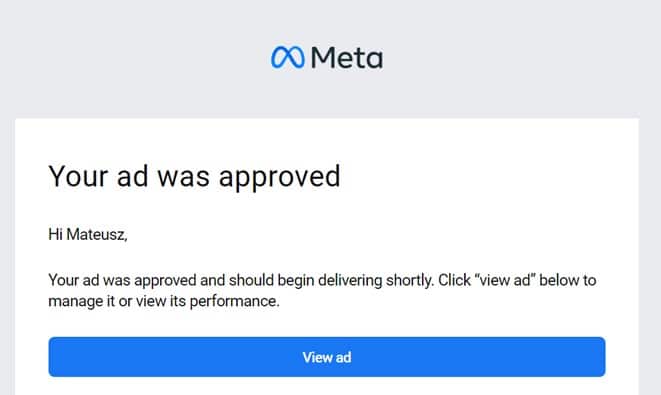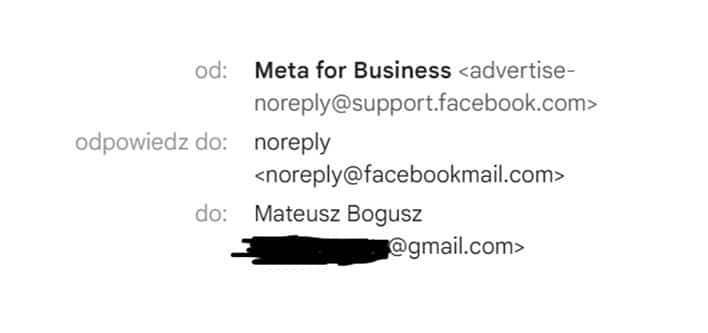Have you ever wondered why some emails reach people’s inboxes while others end up in spam folders or don’t make it at all? In this article, you’ll learn what to do to maximize your chances of reaching your recipients. You will also learn many useful tips to help keep your audiences highly engaged. I also encourage you to download the full version of this publication as a concise e-book. Enjoy the reading!
Table of contents
Why didn’t my message get through? Introduction
Based on the Kaspersky report, it can be assumed that, on average, one out of two messages received on devices on which the company’s services are active is classified as spam. In that case, do devices without security software receive all messages without any verification? Not at all! Checking messages for usability and threat can take place on multiple levels simultaneously.

In order for a message sent by a sender to reach its recipient, it must first pass through the sender’s server (mail provider). Even at this stage, the email can be blocked – especially if the sender uses a bulk email provider such as Mailchimp. For reasons discussed later in this article, providers are keen to ensure that their servers are not used to send harmful and unlawful messages. Therefore, they take measures to limit the possibility of sending messages from a suspicious sender.
Once the message is sent and passes through the first server it goes to the recipient’s destination server (mail provider), which decides how to handle the incoming mail. At this level, messages can be classified as malicious and consequently blocked (the email goes to spam). If they are deemed safe, they are routed to the recipient’s mailbox. Another obstacle in the way of reading an email can be the security system installed in the addressee’s office (e.g., a UTM device – Unified Threat Management). It scans messages sent to addresses in the company’s domain.
Has your message gone through another stage? It’s already really close to its target destination! If your recipient has installed additional security software (e.g. an antivirus program) on their device, it’s possible that it will block your message when it deems it unwanted. The same will happen if your recipient’s email client (e.g. Microsoft Outlook, Mozilla Thunderbird) has additional spam filters or settings configured to prevent message delivery (e.g. sender blocking).
You can learn about how spam filters work in detail in this article.
How many messages are sent each day? How do you put your company logo in the email sender box? What should you take care of so that the message is displayed correctly on the recipient’s device? You can learn all this in the free e-book containing the full version of the article.
1. Email content
You already know how many hurdles an e-mail message has to overcome before it reaches its addressee. But do you know why your messages are considered potentially dangerous or unhelpful to the recipient? You don’t understand why the CTRs of your messages are low? Here are some email content tips you should pay attention to when creating the perfect mailing.
Title and message preview
The title of the message is the only certain information your recipient will see. It should be as short as possible (less than 60 characters with spaces) so that users receiving mail on devices with different screen widths (such as mobile devices) will be able to read it. Limit punctuation marks in titles – ideally there should be no more than three. Also try not to use more than one emoticon in a message title. Communicate specifics and highlights, and avoid overly general phrases such as “Promotion” and “Important message.” Give the recipient a reason to click on your message and learn more than the title alone says.
Some email agents (and most bulk mailing software providers, such as Mailchimp or Prowly) give you the option to fill in the so-called “preview text” of the message. This is a short message preview that, if you leave the field blank, reads the first dozen or so words from the body of the message. If you have the ability to do so, take advantage of it and use the preview field to give the user the additional information they will see before they open your message. This could determine whether they actually do so.

Images vs. text
One indicator that determines whether a message is undesirable is a large disproportion between the amount of text and images in its content. It is assumed that a useful message uses a ratio of min. 60% text to 40% images.
When your message contains images then make sure that each of them has an alternate text (alt text) completed. This is a short text that will be displayed in place of the image when the image cannot be uploaded (e.g. due to a poor connection or blocked display of images in the recipient’s mail agent). Remember that most mail agents block the display of images by default for security reasons. If there is unique content in your images, not displaying the image will deprive the recipient of important information.

Links
Try to use as few links as possible in the body of your messages. If the linked domain seems suspicious (e.g., it won’t provide a secure HTTPS connection) then the entire message may be considered potentially dangerous and end up in spam.
This can also happen if your mailing software measures clicks inside the message (thus changing the link structure), and if you use so-called link shorteners, such as bit.ly, instead of full links.
You can check your message for incorrect links using mail-tester.

List of prohibited phrases
Spam filters operate on a number of variables. One of them is a list of trigger words, which are selected based on the content of emails most often marked as spam. This doesn’t mean that you can’t use the phrases listed below, however, it’s a good idea to limit their use if possible.
Apply now, Sale, Credit card, Urgent, Free access, Unlimited, Bonus, Spam, Earn money, Until stocks last, Success, Cheap, Dear friend, Refund.
Make sure the content is linguistically correct before sending the message. A high frequency of language errors may seem suspicious to spam filters. Frequent grammatical, spelling and stylistic errors are a hallmark of phishing messages sent by foreign hackers. Avoid writing in CAPITAL LETTERS, putting too many exclamation points (“!!!!”) and overusing bright content colors (such as red).
Attachments
Message attachments very often trigger spam filters because they can carry malware. Try to avoid adding attachments to messages addressed to more than a few recipients.
Personalization
The chance of your message being marked as spam increases if the addressee field contains only the email address and not the recipient’s name. Newsletters mailing software (such as Mailchimp) provides the ability to dynamically populate the addressee field with so-called personalization tokens (merge tags). What are the said tokens? They are “variables” under which data relevant to the selected addressee is hidden, such as name, company name, address, etc. Personalized messages increase the engagement of recipients, so it is worth using this functionality if there is such an opportunity.


2. Recipient
Refined message content is an important factor in classifying a message as spam, but also in keeping recipients highly engaged. However, this is not the only aspect you should pay attention to in order to minimize the risk of ending up in spam. From the following text, you will learn what else you can do to increase the deliverability of emails without the help of an IT specialist.
I did not subscribe to this list!
Receiving unsolicited correspondence to a private email inbox has probably happened to everyone. This is an extremely annoying activity and in most cases illegal. The greatest value of a mailing list is not the number of addresses it consists of, but the level of engagement of its recipients. Therefore, it is best to build the list organically, for example, using a form on your own website. This is not the easiest or fastest method, but it is certainly the most effective in the long run.
If you send correspondence to people who have never subscribed to your list you are risking a lot. Frequent marking of your messages as ” undesired” may be noted in public anti-spam filters. The recipient may also block your address preventing you from reaching them with subsequent messages. Bottom line – the recipient must agree to your marketing contact before you put them on your list. Send messages only to people who want to receive them and you think the information in the message will be of interest to them.
I don’t want to be on your list!
There are times when a recipient no longer wants to receive messages from you. If you use bulk mailing software, it’s a good idea to include a link in each message that allows the recipient to unsubscribe from your contact database. The absence of such an option will increase the likelihood of your messages being marked as spam. Users who don’t find an unsubscribe option readily available (or if their desire to unsubscribe is not respected by you) are likely to block your address (or the entire domain from which you send). Mail providers (such as Gmail) are particularly attentive to the availability of an unsubscribe (opt-out) option.


Engagement
If the majority of recipients in your database do not open your messages, it is a clear indication to email providers that messages sent from your domain are of little value to the recipient. Sending emails to inactive email addresses (or those that don’t interact with your messages in any way) only works to the detriment of your base and your domain’s reputation. Remember to regularly purge your database of addresses that have zero engagement.
It is also worth paying attention to addresses that “bounce” messages. Regularly remove addresses from your database that return messages (known as soft bounce or hard bounce). Bounces usually occur when the recipient has blocked your address, their mailbox is overflowing or you have been blocked by one of the spam filters.

The law is sacred
Depending on which country the recipient of your message is in, anti-spam laws may vary. It’s a good idea to verify in advance that you are complying with the laws regarding marketing mailings in the country to which you plan to send.
It is worth reviewing the following legislation:
EU | General Data Protection Regulation (GDPR)
USA | Controlling the Assault of Non-Solicited Pornography and Marketing (CAN-SPAM)
CALIFORNIA | California Consumer Privacy Act (CCPA)
CANADA | Anti-Spam Legislation (CASL)
3. Technical aspects
If you follow all the tips mentioned in the text above then most likely your mailings are already at a very high level! There are still a few things you can do to increase the deliverability of your messages. These mainly concern the settings of the server from which you are sending emails and how your message is designed (in case you are sending messages designed and coded). Some of these may require the help of an IT professional.
What are SPF records? What is sender reputation? What to watch out for when designing an HTML message? You can read about the technical aspects that affect deliverability in the full article in the e-book available for free download below.
That’s it! As you can see, there are really many factors that affect the deliverability of your messages. It’s impossible to remember them all, so it’s best to save this page in your browser bookmarks and come back to it for your next mailings. I also encourage you to download this publication as a compact e-book. Have a successful mailing!
How many messages are sent each day? How do you put your company logo in the email sender box? What should you take care of so that the message is displayed correctly on the recipient’s device? You can learn all this in the free e-book containing the full version of the article.
Sources: emaillabs.io, emaillabs.io, emaillabs.io, mailchimp.com, mailchimp.com, mailchimp.com, mailchimp.com, mailchimp.com, mailchimp.com, sendx.io, sendgrid.com, sendgrid.com, sendgrid.com, sendgrid.com, mailtrap.io, jchost.pl, freshmail.pl, prowly.com, prowly.com, medium.com




